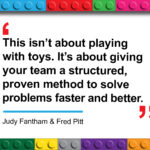Several years ago, I wrote a column for the Globe Careers’ Leadership Lab series exploring the power of entrenched perspectives, using an example that, at the time, captured the internet by storm—the viral debate over the colour of a dress. Was it blue and black, or white and gold? What seemed like a simple question quickly spiraled into a massive public discourse on social media, rivaling even the Ice Bucket Challenge’s reach and intensity. People around the world, including those in my household, were firmly divided. Some saw white and gold, others saw blue and black, and each group was convinced of their viewpoint.
This debate, while rooted in colour perception, was about more than just hues. It highlighted a fundamental truth about human nature: our perspectives are deeply ingrained, and shaped by our experiences and contexts. As leaders, recognizing this reality is crucial. Understanding that our own viewpoints, no matter how clear they seem to us, may not be shared, or understood by others. This realization is key to navigating complex organizational challenges and fostering a culture where diverse perspectives are not just acknowledged but valued.
The Power of Perspective
Building on the dress example, we can see that just as individuals saw the dress in different ways, people in organizations approach problems and opportunities from various perspectives. These differences often stem from everyone’s experiences, roles, and inherent biases. What is important to recognize is that, within an organization, we frequently assume that everyone is starting from the same place, and that we are all tackling a problem with a shared understanding. However, this is rarely the case. The frustration that arises when processes become divisive or when consensus seems elusive often stems from this mistaken assumption. Yet, these differing perspectives are not merely challenges to be managed—they are powerful assets: when leveraged effectively, the variety of viewpoints within a team can lead to more innovative and comprehensive solutions.
Fostering an environment where differing viewpoints are not only accepted but actively sought out, leaders can turn potential conflicts into catalysts for creativity and growth. The key lies in managing these perspectives effectively, ensuring that they contribute to a collective vision rather than pulling the organization in conflicting directions.
Why Perspectives Matter
Leaders need to grasp the significance of perspectives and why they are particularly vital to effective leadership. A significant part of a leader’s role involves navigating and finding solutions to complex problems and identifying opportunities for the future—situations where there is rarely an immediate and obvious answer or solution. The ability to incorporate various viewpoints into the decision-making process becomes essential in steering these challenges effectively. In the world of aviation, the adage “It’s not about who’s right, but what’s right” takes on a life-or-death significance. Safety and quality are paramount, and the industry understands that the best outcomes come from incorporating all perspectives. Whether it’s the pilot in the cockpit, the engineer on the ground, or the air traffic controller in the tower, each viewpoint is critical to ensuring the safe operation of an aircraft. This principle transcends aviation and is equally applicable to leadership. Just as a thorough safety check requires input from multiple angles, the most effective leaders understand that achieving the right solution often means setting aside ego and focusing on what is best for the organization.
By bringing together diverse perspectives, leaders can create an environment where the ‘right’ answer naturally emerges, guided by collective insight rather than individual pride. This is where the skills of leadership truly shine. As leaders, it is critical to recognize our biases and to have the ability to step back and consider that our own perspective may be contributing to the problem. The way I see the problem may, in fact, be the problem. Furthermore, based on my own experience, I found it invaluable to look beyond the organization, and allow for outside-in perspectives. I spent critical time looking outside health care to learn from other industries and best practices and consulting with external experts to avoid blind spots and rigid assumptions that can naturally develop over time.
Leadership is not just about guiding a team toward a solution; it is about facilitating a process where the best ideas can surface, no matter where they come from. By embracing diverse perspectives and occasionally stepping outside the internal echo chamber, leaders can ensure that their decisions are informed, inclusive, and ultimately more effective. Embrace the diversity of thought and watch as the most unexpected ideas become your greatest successes.
Shirlee Sharkey is a seasoned CEO known for driving exponential growth and cultivating executive leadership. She can be reached here.






